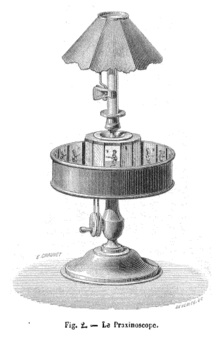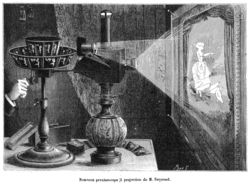| Charles-Émile Reynaud |
In 1889, Reynaud developed the Théâtre Optique, an improved version of his previous device, capable of projecting images on a screen from a longer roll of pictures - allowed him to show hand-drawn animated cartoons to larger audiences.
On 28 October 1892 he projected the first animated film in public, Pauvre Pierrot, at the Musée Grévin in Paris. This film is also notable as the first known instance of film perforations being used.
  |
| Praxinoscope (left) and Théâtre Optique (right) |
No comments:
Post a Comment